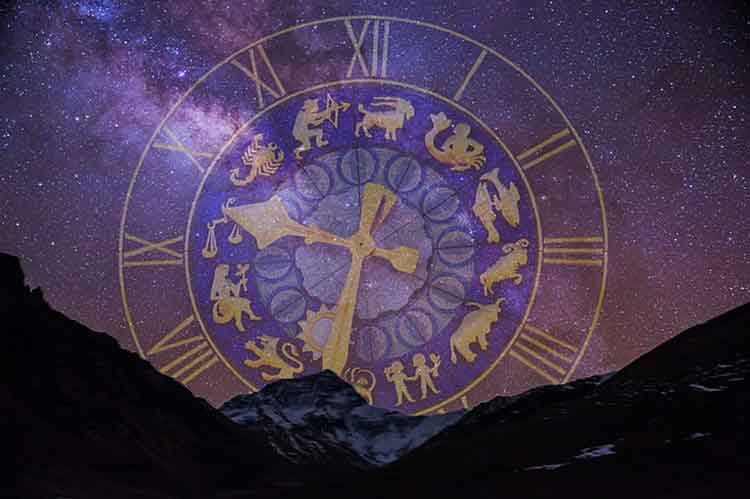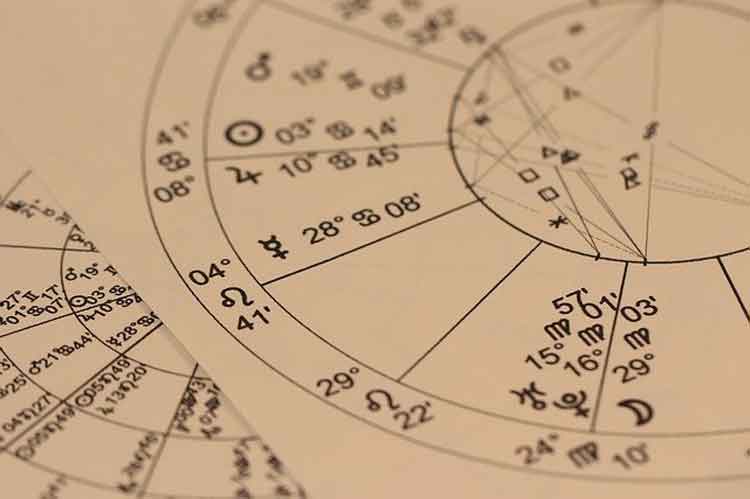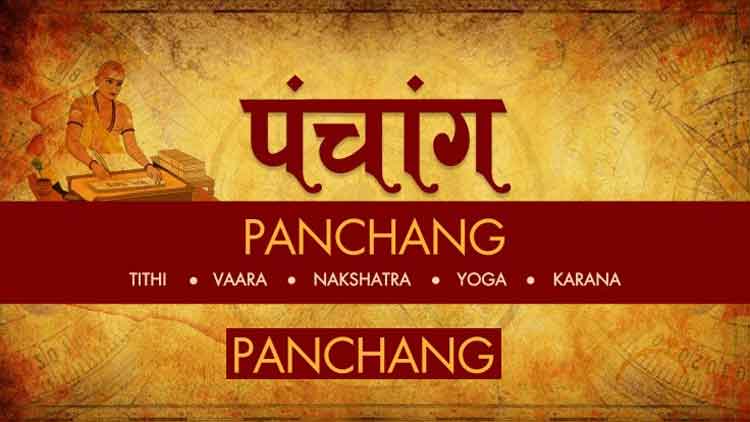Table of Contents
Panchangam (Hindu Panchang)
In Vedic Astrology, the Hindu Panchang is extremely important. It is considered that it is difficult to carry out a feast, festival, celebration, or job without consulting the panchang, because we can only find out the Tithi and Muhurat with the help of the panchang. On this page, you can see all of the essential elements of Hindu Panchangam.
The Muhurat is calculated based on the computations of five components of the Hindu Panchang. On this page, you will find information on panchang, such as the day and month, as well as popular panchangs from many states, including Day, Tithi, Nakshatra, Yoga, Karana, Sunrise-Sunset, and Moonrise-Moonset.
Aside from that, the panchang column will provide you with information on the benefic and malefic timings. You can also use this to access the online software and learn about the panchang in your city. The online panchang service can provide you with information on the Tithi, Festival, and Muhurat.
Also Read: Oil Massage as per Hindu Shastra
What Is A Hindu Panchang? How Does Hindu Panchang Work?
The Hindu Panchang, also known as Panchangam or Hindu calendar, is a collection of lunisolar calendars utilised extensively in Vedic Astrology. A static form of timekeeping is used, but it varies depending on the Moon or Sun Cycle, the names of the months, and the start of the New Year. The following are some of the regional calendars used in India:
- The Vikrami (Bikrami) Calendar is found in India’s Northern, Western, and Central areas.
- The Bengali Calendar, which is found in the East, focuses on the Lunar Cycle.
- The Malayalam Calendar, which originated in Kerala, places a strong focus on the solar cycle.
The Panchang is a tabular record of important, auspicious dates and astrological information. A panchang is created based on the positions of planets, stars, and other celestial bodies. It is composed of two words: ‘Panch,’ which means ‘Five,’ and ‘Ang,’ which means ‘Limbs,’ i.e. ‘Five Limbs.’ It is derived from Sanskrit. Before beginning any auspicious endeavour, such as marriage, celebration, puja, or launching a business, it is important to determine a favourable day and time. Obstacles can be tracked and hurdles can be overcome by following this, increasing the success rate.

Benefits and Applications of Panchangam
In Hinduism, the Panchang is used to determine the state of the Moon, Sun, and other planets before undertaking any auspicious work, such as a marriage ceremony, birthday puja, or company inauguration. It has a number of benefits, which are as follows:
- A horoscope cannot be written without first studying Panchangam, as the astrologer must take into account the positions of planets and constellations.
- The readings assist in determining the outlook for any given day.
- By consulting the Panchang, one can proceed with arranging auspicious events or organising any rite.
- Astrologers can interpret the Panchang and provide information on a variety of Hindu festivals and holidays.
- The Hindu calendar can also be used to determine the most auspicious Muhurat to begin any job.
- By studying the Indian calendar, one can identify unfavourable and inauspicious muhurats such Sade Sati, Rahu Kalam, and Choghadiya, as well as find ways to counteract their malefic effects.
- In addition to muhurat, Panchang aids in the identification of transits, retrogrades, cleansed ascendant, Dasha, propitiations, omens, social customs, and other astrological phenomena.
These are some of the most important aspects to consider when reading the Hindu Panchang. I hope you enjoyed this article and were able to find solutions to your questions.
Also Read: Science of Bath in Divine Hindu Religion
The Hindu Panchang’s Five Elements
The Hindu Panchang is made up of five distinct energy sources, which are as follows:
- Vaar (Weekday): Vaar (Weekday): Vaar (Weekday): Vaar (Week Panchang is built on a seven-day week and uses it to adjust auspicious events, dates, and celebrations. The seven-day week runs from Sunday to Saturday and is named after the planets that represent them.
- The state and position of the Moon in Shukla Paksha (waxing phase) or Krishna Paksha are referred to as Tithi (the Lunar Day) (waning phase). Tithi is named after the Moon’s state in either scenario. This compensates for the fact that there are 14 tithis in both Amavasya and Purnima cycles.
- Nakshatra (Lunar Mansion): According to Vedic Astrology, the universe is divided into 12 constellations or zodiacs. Nakshatras are a constellation of 27 stars that constitute a zodiac sign. They’re analysed based on the Moon’s location.
- Karana (Half Lunar Day): Karana refers to the half of a Yog. A Date or Tithi is made up of two Karanas, for a total of 11 Karanas. Four of them are fixed, while the other seven are adjustable.
- Yoga (Luni-Solar Day): A yoga is determined by adding the Moon’s and Sun’s longitudes and dividing the result into 27 parts in 13°20′.
You can check the Panchang for today to see what time will be most beneficial for you to achieve your goals.

The Hindu Panchang and Its Astrological Importance
The following are three ways in which significance can be described in Astrology:
According to Vedic Astrology, there are five attributes, which are Tithi, Yoga, Karana, Nakshatra, and Var.
Almanac, a book that records astrological dates and other information.
A component of Ganesh-Ambika-pjan is Panchnga-Pjan.
In India, two types of lunar month systems are used: the Amanta or Sukladi system (when the New Moon ends) and the Purnimanta system (when the Full Moon begins) (when one Full Moon is covered until next). The Moon Is Full Lunar months are used in astrology to foretell the future and symbolise the name of the Solar Month’s star. The table is as follows:
| S.No. | Lunar (Month) | Solar (Month) |
| 1 | Chitta | Chaitra |
| 2 | Visaka | Vaishaka |
| 3 | Jyeshta | Jyeshta |
| 4 | Poorvashada | Ashada |
| 5 | Sravana | Shravana |
| 6 | Poorvabhadra | Bhadrapada |
| 7 | Aswini | Aswija |
| 8 | Kartika | Kartika |
| 9 | Mrigashira | Margashira |
| 10 | Pushyami | Pushya |
| 11 | Makha | Magha |
| 12 | Uttaraphalguni | Phalguna |
Also Watch: Mahamantra of Kaliyug | Sin Removal Mantra | Hare Rama Hare Krishna
When it comes to Hindu Panchang, astrology advises that Tithi or Date is one of the most important principles to consider. A Lunar month has 30 Tithis, each of which is completed when the Moon gains 12 degrees or a multiple of the Sun. They are further separated into five groups, each of which is extremely important when casting prophecies, offering treatments, and suggesting auspicious and unfavourable muhurats:
- Nanda (Ananda or Joyous) Prathipada (1st), Shasti (6th), and Ekadashi are the tithi (11th)
- Bhadra (Arogya, Mangala or Healthy) Dwitiya (2nd), Saptami (7th), and Dwadashi are the tithi (12th)
- Jaya (Victory) Tritiya (3rd), Ashtami (8th), and Trayodashi are the tithi for Tuesday (13th)
- Riktha (Loss or Nashta) Saturday’s tithi are Chaturthi (4th), Navami (9th), and Chaturdasi (14th)
- Poorna is number five (Sampoorna – Full or New Moon) Thursday is the Tithi. Panchami (5th), Dashami (10th), and Amavasya (New Moon) or Poornima are the Hindu festivals of Panchami, Dashami, and Amavasya.
